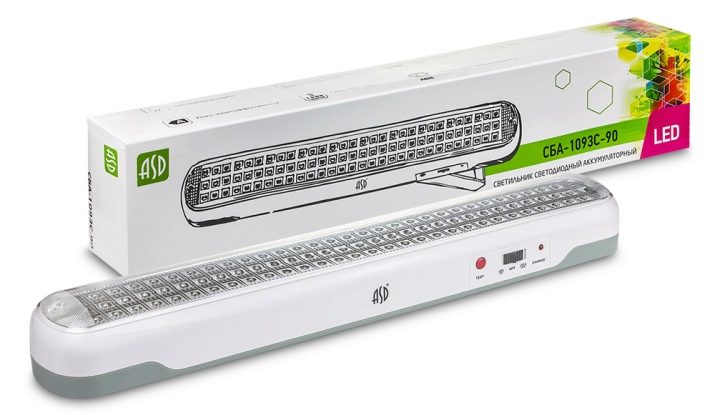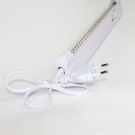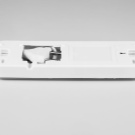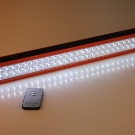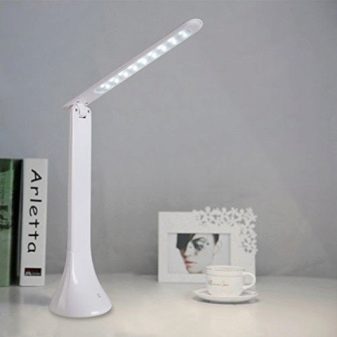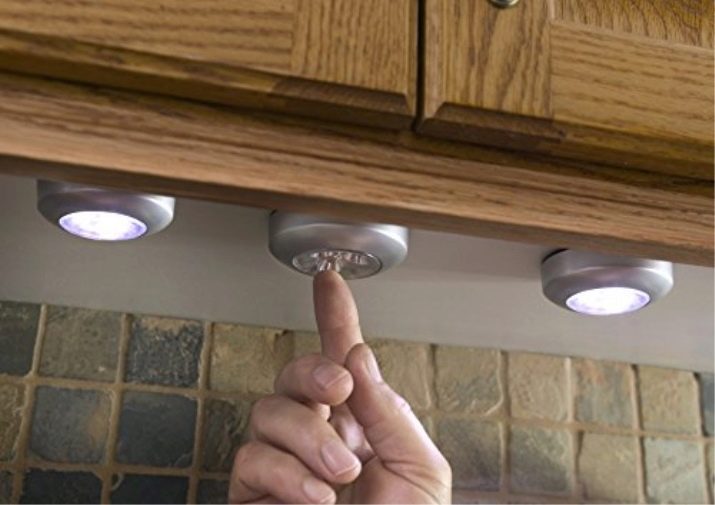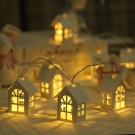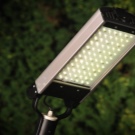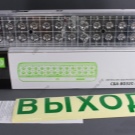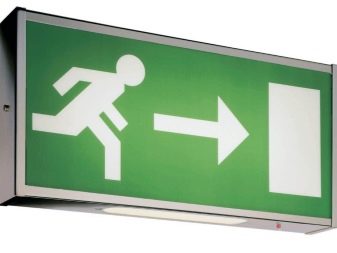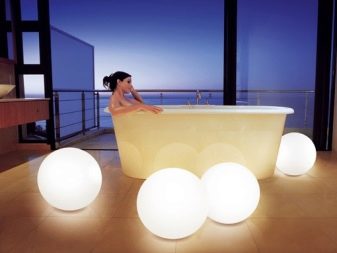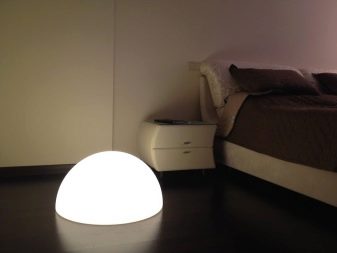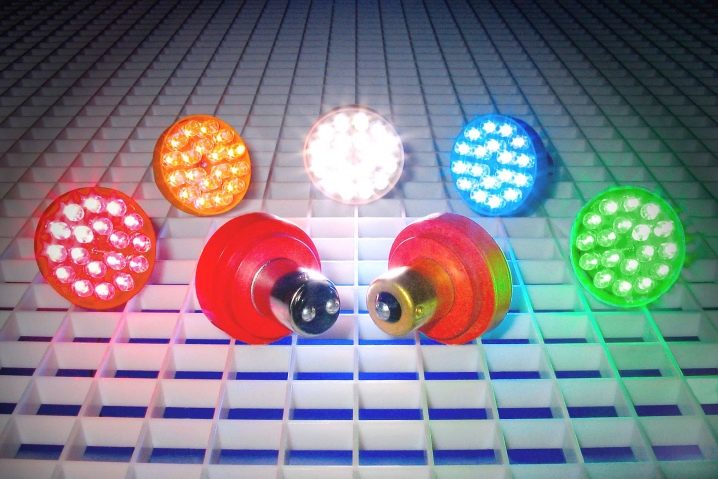LED rechargeable lights
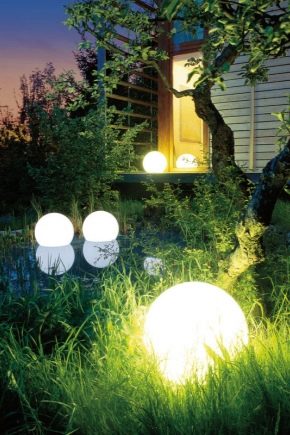
LED luminaires (LEDs) with rechargeable batteries are autonomous devices, for which operation it is not necessary to connect to a 220 V electrical network. Such devices are widely used in cases where the installation of conventional lighting elements is impossible or not justified. Thanks to the rich design solutions, LED devices can become a bright and useful piece of furniture.
Special features
LED luminaires by design features are divided into rechargeable (DC) and combined (AC), which can operate from the network, and from the battery. Removable battery is located in the housing of the illuminant and, if necessary, can be easily replaced independently.In addition to batteries, some modern LED models are equipped with a lithium-ion battery that can be charged, and its service life is about 3 years.
Also, rechargeable lamps are easy to install, their installation is under the power of a person who does not have experience in working with electricity and complex technical devices.
Advantages and disadvantages
Diode home lighting devices have significant advantages over classic lamps:
- Environmental Safety. Diodes do not contain harmful impurities and mercury, such as fluorescent lamps, and therefore do not harm humans and nature.
- Energy efficiency. LEDs consume very little power, so the battery will last for a long time.
- Light parameters. LED-lamps are very bright, have different variations of performance and technical characteristics, so everyone can choose the appropriate level of light.
- Durability. Diodes serve up to one hundred thousand hours, which significantly outpace other lamps, including energy-saving ones.
- Compactness. Lamps with battery have no wires. This makes it possible to use them in any premises without pre-stroking the walls and laying the electrical cable.
- Rich selection.LED lamps are varied in their design, size and purpose, so it is easy to choose a suitable LED device for the interior.
- Unpretentiousness. Temperature mode of the LED lamp - from +600 C to - 600 C.
Despite the advantages, these lighting elements have one drawback - the need to change the battery. However, if we consider that the diodes consume supersmall amounts of energy, the battery lasts a long time. In addition, even taking into account the periodic replacement of the battery, it will be cheaper to use a LED luminaire than a regular mains operated.
Application area
LED rechargeable lamps - modern safe lighting. They are used:
- for the decoration of the facade of the building, garden and other street objects;
- for street lighting;
- to illuminate the garden paths (such lamps are often equipped with solar panels);
- indoors for various purposes;
- as Christmas-tree decorations;
- as elements of emergency lighting.
Often, LED lamps are installed in children's rooms. They are used as table lamps or night lamps.
Kinds
In a specialized shop you can find a wide selection of various LED lamps.
Among them are the following models:
- portable;
- stationary;
- interior.
They are distinguished not only by the scope of application, but also by their design and technical features:
- Portable lamps are often complemented by a charger suitable for a car cigarette lighter. Such devices are universal, they can be taken on the road, on vacation. Some models are enclosed in a waterproof case that allows you to use the device in the rain or in rooms with high humidity.
- Stationary luminaires are most often represented by instruments that are used in emergency situations when power is turned off. These devices are able to work for 3-4 hours, effectively lighting the room. All modern multi-storey residential buildings and production facilities should be equipped with special emergency signs-indicators that indicate the exit from the building. There are also devices for backup lighting and illumination of dangerous areas. Some models are equipped with a motion sensor.
- Interior LED devices can be both wall-mounted and desktop models. Suitable for daily use, as well as in a power outage situation. Diverse in design, used in the corridors, children's rooms, living rooms. Some models come with a remote control that allows you to turn the lamp on and off and adjust the brightness of the lighting.
There are models of luminaires equipped with a light sensor that independently adjusts the brightness of the diodes depending on the conditions.
How to choose a LED lamp?
When buying a battery lighting device, you should follow these rules:
- Take into account the required dimensions. Dimensions of diode luminaires vary greatly, so you should buy them, taking into account the necessary parameters.
- Determine the desired power. Depending on the destination, the brightness of the LED device can vary from 1300 to 2300 lumens.
- Consider the required scattering angle and type of LEDs, depending on the purpose. So, for the wall and table lamps used different lighting elements.
- The level of water resistance should not be lower than IP5.This parameter has high-quality and durable devices.
Also, some rechargeable lamps have several modes of operation and several color modes, which allows to diversify the interior inside or outside the room. Pay attention to the type and capacity of the battery.
If you plan to use the device all the time, you should give preference to models with a built-in lithium-ion battery. Such devices will last longer than battery powered ones.
Operating rules
In order for a rechargeable LED lamp to serve for a long time, you must follow the following rules:
- carry out regular cleaning of the lighting device with a soft, dry cloth;
- do not place the lamp near flammable objects;
- Do not use if the case or battery is damaged.
- do not make changes to the design of the device;
- operate the device in the recommended conditions, taking into account the level of load and moisture protection parameter.
Despite the safety of LED lighting elements, care should be taken when using them by children.Small batteries can be swallowed, and a lithium-ion battery can explode if damaged, could cause a fire.
Requirements
LED lamps are safe and widely used not only in residential premises, but also on the streets, in medical and educational institutions. LED lighting devices do not adversely affect the human body if they meet the following requirements:
- The conditional protective angle should be at least 90 degrees in order to limit the glare on the eyes.
- Overall brightness - no more than 5000 cd / m. To comply with this parameter in the lamps are used diffusers.
- Permissible brightness unevenness should be 5 Lmax to 1 Lmin. Can be measured with a special device.
- The color temperature of white LEDs should not exceed 40000 K. This parameter determines the color of the lamp.
- Power should not be greater than 0.3 watts.
In high-quality LED luminaires manufactured in accordance with GOST, all the listed parameters are indicated on the packaging or in the accompanying documents.
Choosing a rechargeable LED lighting device, you can save a lot on energy bills.LED is a modern and safe alternative to mercury energy-saving lamps.
Examples of the use of LED lamps in the house and garden can be viewed in the following video.
